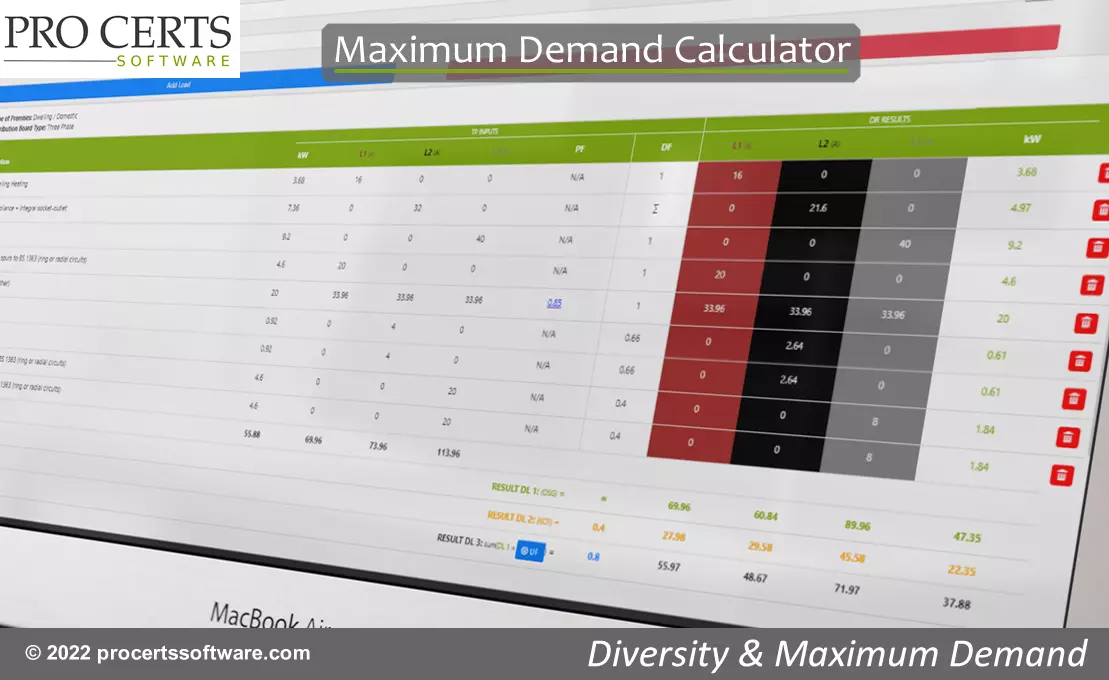Calculating the maximum demand and total connected load can be daunting and confusing, until now, by using our new web based electrical diversity calculator software which is included within our cloud based online electrical software.
This maximum demand calculator will calculate the maximum demand for single phase and three phase loads from the total connected load and apply diversity using three different methods with the option to apply an additional usage factor (UF) to the diversified load (DL 1)
Methods of Calculating Maximum Demand
- On-Site Guide Appendix A
- Rule of Thumb Method
- Custom Method
- Apply Optional Additional Usage Factor (UF)









